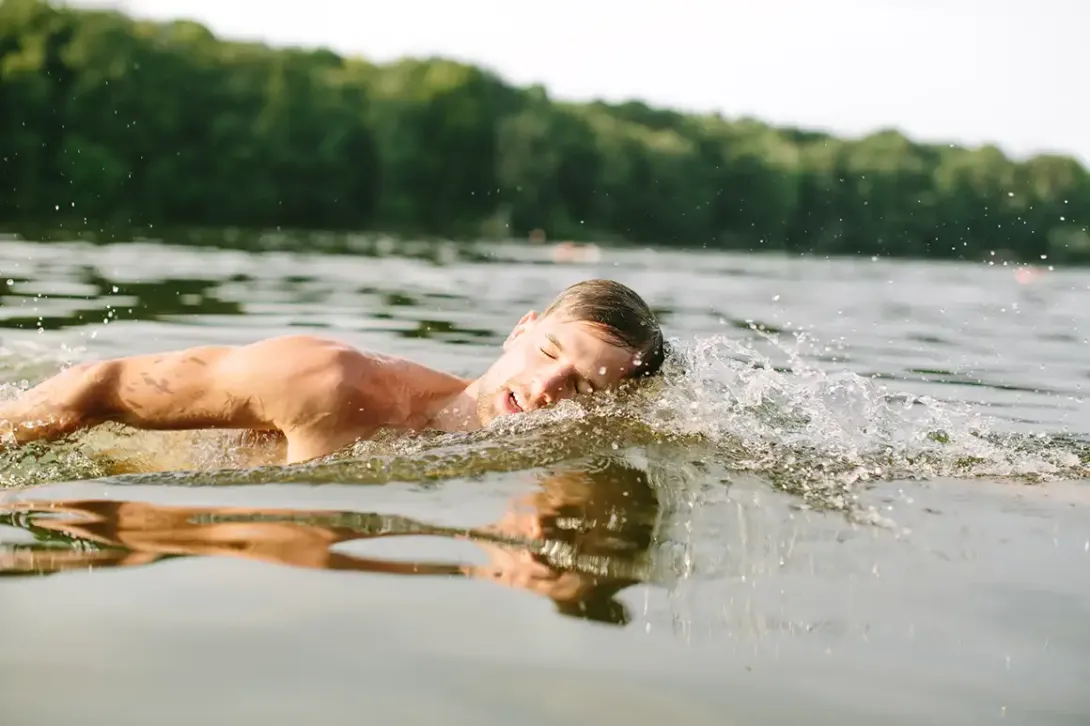
Is bathing in rivers or reservoirs healthy?
Enjoying the summer and a nice swim should not override safety.
Cooling off and going for a swim is undoubtedly one of the best ways to stave off the heat and high temperatures. Although most people think of swimming as something they do at the beach, there are many other options for those who are not fans of brine to enjoy a proper swim.
Yes, we are talking about swimming pools, but also about reservoirs, rivers or marshes, which can be just as effective in overcoming a sweltering heat wave. Bathing in these bodies of water can be a very pleasant experience, but it depends greatly on the quality of the water, the upkeep of the natural surroundings - a serious problem, for example, is the disposal of cigarette butts - and the precautions each of us takes before diving in.
When it comes to cooling off in this type of open body of water - such as a river or reservoir - it is important to take certain precautions. The first thing is that we can only swim in those areas that are clearly indicated, where swimming is allowed and that prepared for this purpose. Not all rivers or reservoirs allow bathing. In many of these bodies of water diving is explicitly forbidden because it is dangerous for your health.
The hazards of bathing in a reservoir or river
To ensure a swim is refreshing and fun, but also safe, you need to be cautious. From bumps or cuts to drowning or contact with viruses, bacteria, fungi or parasites in the water, bathing in unsuitable places carries a number of health risks that can spoil a long-awaited holiday.
Fresh water bodies such as reservoirs, marshes or rivers can therefore pose certain dangers to people. On the one hand, the water will not always be of good quality or treated. The risk lies in the fact that poor quality water is linked, for example, to possible bacterial contamination that could lead to gastrointestinal or skin infections.
Also, it is often subject to significant temperature changes that cause strong water currents, which are dangerous even for experienced swimmers. It is important to bear in mind that, although the water in a river may appear calm, currents can cause the surface water to be colder than the water at the bottom, leading to unpredictable movement.
When swimming in reservoirs, on the other hand, care must be taken to ensure that sluice gates are not opened, creating dangerous water currents that are often the main cause behind drowning incidents. If a person is caught in a current, the advice is not to try to swim against it, but rather to swim parallel to the shore.
Appropriate preventive measures
Apart from all this, the io Foundation reminds us that the bottoms of reservoirs and rivers are not always safe. They can accumulate stones, roots, algae, sharp objects and other buried debris that can cause snags, falls or injuries that can put people's lives at risk. For this reason, it is recommended to enter these bodies of water wearing appropriate footwear. This is a preventive and very effective measure to avoid wounds and scratches to the feet or even injuries and falls.
Finally, another of the dangers of bathing in this type of fresh water body are possible impacts and trauma. It is very dangerous to dive in headfirst if you do not know the precise depth of the water, because it can cause blows to the head or very serious spinal injuries.
As you can see, bathing in a river or reservoir this summer can be a fun and refreshing experience. But it can also cause terrible events if you don't take the necessary precautions, such as only bathing in safe and authorised places. Once in, it is crucial to avoid swallowing water and to wear waterproof footwear. Finally, once at home, the best thing to do is to take a shower to remove any possible pathogens and prevent infections.




